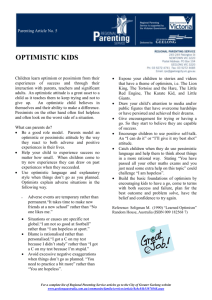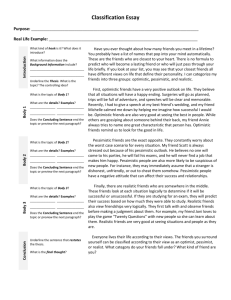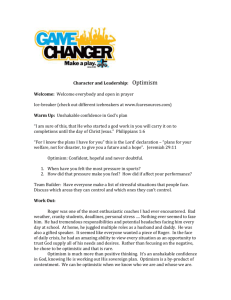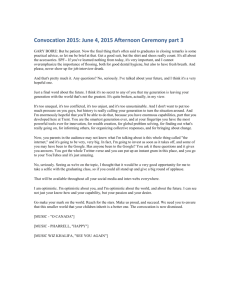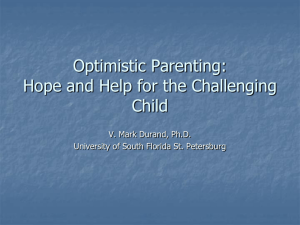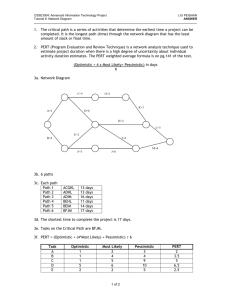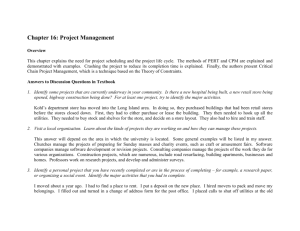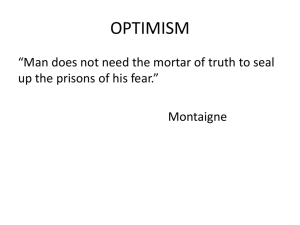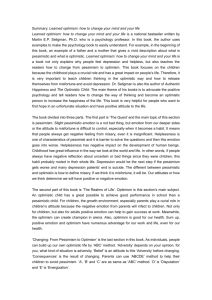Learned Helplessness & Optimism: Overcoming Procrastination
advertisement
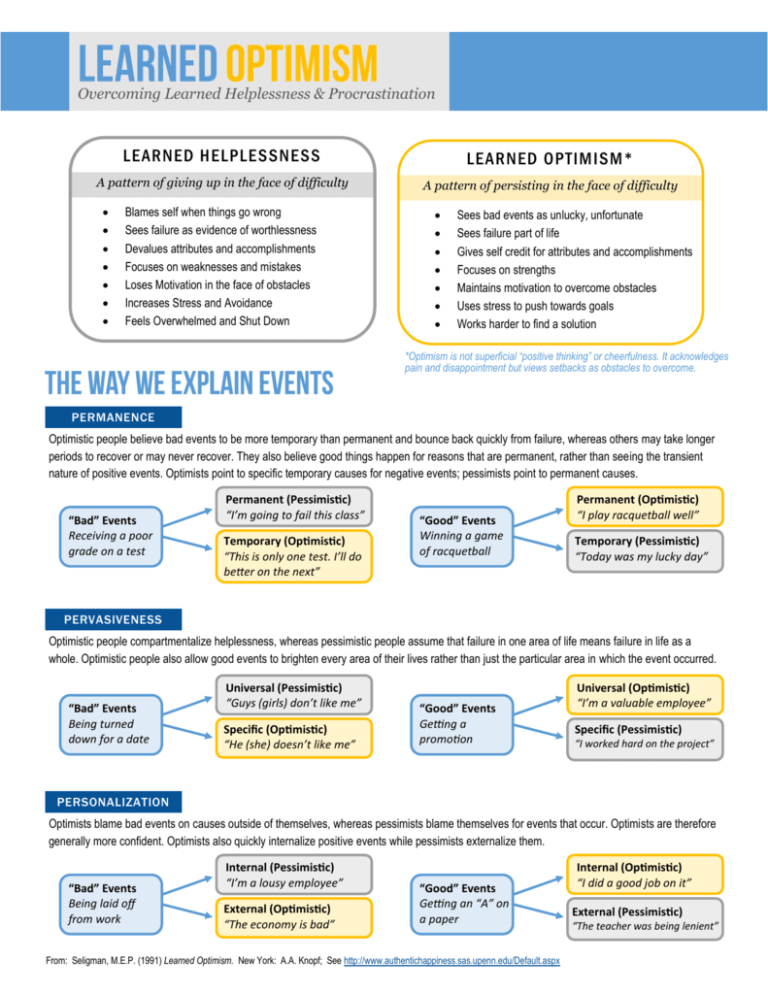
Overcoming Learned Helplessness & Procrastination LEARNED HELPLESSNESS LEARNED OPTIMISM* A pattern of giving up in the face of difficulty A pattern of persisting in the face of difficulty Blames self when things go wrong Sees failure as evidence of worthlessness Devalues attributes and accomplishments Focuses on weaknesses and mistakes Loses Motivation in the face of obstacles Increases Stress and Avoidance Feels Overwhelmed and Shut Down Sees bad events as unlucky, unfortunate Sees failure part of life Gives self credit for attributes and accomplishments Focuses on strengths Maintains motivation to overcome obstacles Uses stress to push towards goals Works harder to find a solution *Optimism is not superficial “positive thinking” or cheerfulness. It acknowledges pain and disappointment but views setbacks as obstacles to overcome. PERMANENCE Optimistic people believe bad events to be more temporary than permanent and bounce back quickly from failure, whereas others may take longer periods to recover or may never recover. They also believe good things happen for reasons that are permanent, rather than seeing the transient nature of positive events. Optimists point to specific temporary causes for negative events; pessimists point to permanent causes. “Bad” Events Receiving a poor grade on a test Permanent (Pessimistic) “I’m going to fail this class” Temporary (Optimistic) “This is only one test. I’ll do better on the next” “Good” Events Winning a game of racquetball Permanent (Optimistic) “I play racquetball well” Temporary (Pessimistic) “Today was my lucky day” PERVASIVENESS Optimistic people compartmentalize helplessness, whereas pessimistic people assume that failure in one area of life means failure in life as a whole. Optimistic people also allow good events to brighten every area of their lives rather than just the particular area in which the event occurred. “Bad” Events Being turned down for a date Universal (Pessimistic) “Guys (girls) don’t like me” Specific (Optimistic) “He (she) doesn’t like me” “Good” Events Getting a promotion Universal (Optimistic) “I’m a valuable employee” Specific (Pessimistic) “I worked hard on the project” PERSONALIZATION Optimists blame bad events on causes outside of themselves, whereas pessimists blame themselves for events that occur. Optimists are therefore generally more confident. Optimists also quickly internalize positive events while pessimists externalize them. “Bad” Events Being laid off from work Internal (Pessimistic) “I’m a lousy employee” External (Optimistic) “The economy is bad” “Good” Events Getting an “A” on a paper From: Seligman, M.E.P. (1991) Learned Optimism. New York: A.A. Knopf; See http://www.authentichappiness.sas.upenn.edu/Default.aspx Internal (Optimistic) “I did a good job on it” External (Pessimistic) “The teacher was being lenient” steps for overcoming “How to turn the Mountain back into a Molehill” to thoughts and feelings Notice pessimistic thinking and mental barriers that are sapping your motivation Ask yourself, “What am I telling myself about this project that is making me feel more overwhelmed by it?” Handouts*: Stress and the Mind, Stress and Performance This takes practice like any other skill Calm down by taking several slower deeper breaths or do another relaxation skill. Remind yourself, “I am stressed, not helpless” or “It’s okay that I don’t know how to do this. I can figure it out.” Repeat a more calming, optimistic statement each time you exhale until you feel calmer and more mentally clear. Handouts: Changing our Thoughts, Breathing, Eight Relaxation Skills, 15 Second Refresher, Test Anxiety Relaxation Recordings: Breathing or any other skill Write a list of smaller steps that make up the whole task in no particular order—just start brainstorming. Break down each step into smaller and smaller steps until you find a few steps that are more doable. For each step ask yourself questions such as, “What part of this do I know how to do?” “Where could I start on this step? “ “Who can I ask for help?” “Where can I go for help?” “Who can I brainstorm ideas with?” Create an outline or organize the steps as needed Do one small thing, maybe the thing you least dread doing. Projects don’t have to be done in order from beginning to end. Check it off the list. for having started. Do another thing, and so on, chipping away at the whole. As you understand more and more how to complete the whole task, develop a more specific plan and timeline for completing it. Remember that most projects take more time than expected. *Handouts and recordings can be found at the BYU Stress Management and Biofeedback Services website https://caps.byu.edu/biofeedback
